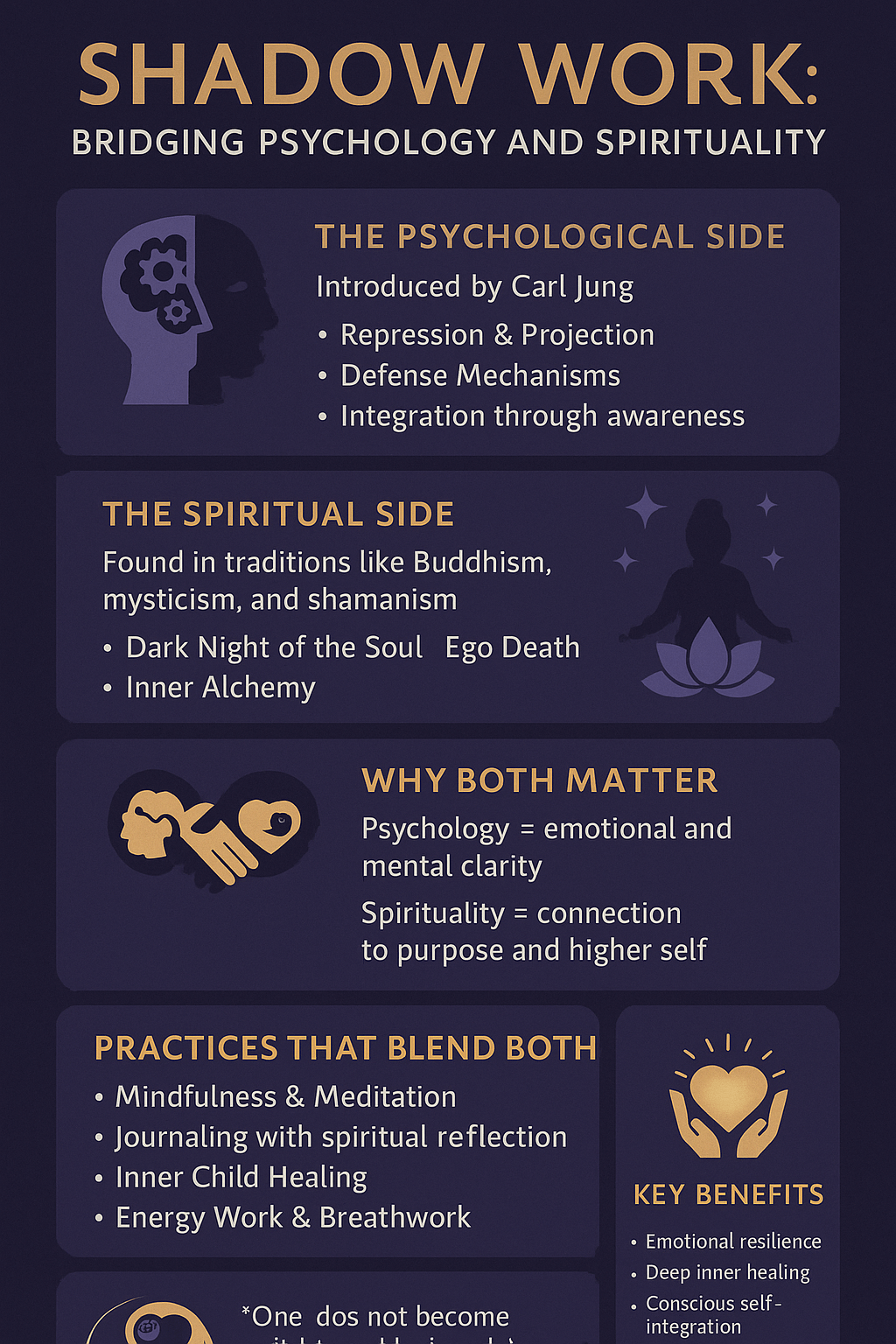- Understanding the ‘Shadow’: Revealing the Hidden Parts of Yourself
- Meeting Your Shadow: Identifying and Embracing Your Hidden Traits
- Shadow Work: Exploring the Psychological and Spiritual Dimensions
As we continue our journey through shadow work, we now explore the powerful intersection between psychology and spirituality. While shadow work has deep roots in Carl Jung’s psychological theories, it also resonates with spiritual traditions across the world. Understanding both perspectives can help you embrace the full depth of your personal transformation.
The Psychological Side of Shadow Work
Carl Jung introduced the concept of the shadow as a fundamental part of the psyche. He saw it as the unconscious container for the parts of ourselves that we deny, suppress, or fail to develop.
Core Psychological Ideas:
- Repression and Projection: Traits we dislike in ourselves are often projected onto others.
- Defense Mechanisms: The ego resists facing uncomfortable truths.
- Integration: Healing begins when the conscious mind acknowledges and accepts the shadow.
Shadow work in psychology involves introspection, analysis, and often therapeutic support. It aims to bring unconscious patterns into awareness so they no longer control our thoughts and behavior.
The Spiritual Side of Shadow Work
Spiritual traditions have long acknowledged the need to face inner darkness. From Buddhism to shamanism to mystical Christianity, the idea of confronting the shadow self—or egoic illusions—has always been part of the path to awakening.
Spiritual Concepts Aligned with Shadow Work:
- The Dark Night of the Soul: A spiritual crisis where one confronts the void and emerges transformed.
- Ego Death: Letting go of false identities to uncover the higher self.
- Inner Alchemy: Transforming base emotions into higher states of consciousness.
Spiritual shadow work focuses on wholeness, unity, and transcending the dualities of light and dark, good and bad.
Why Combining Both Approaches Matters
Relying solely on psychology can sometimes limit the experience to mental processes. On the other hand, a purely spiritual approach might bypass emotional healing by avoiding the deeper psychological roots of pain.
When combined, psychological and spiritual shadow work helps you:
- Process trauma while connecting to a sense of higher purpose.
- Balance intellectual understanding with heart-based transformation.
- Integrate both personal healing and collective awakening.
Practices That Blend Psychology and Spirituality
Here are a few integrative methods you can explore:
- Mindfulness & Meditation: Develops awareness of emotional triggers and unconscious thoughts.
- Journaling with Intention: Mix psychological analysis with spiritual reflection.
- Inner Child Healing: Combines therapeutic tools with nurturing visualization.
- Energy Work & Breathwork: Unlocks and releases suppressed emotional energy.
Final Thoughts
Whether you resonate more with science or spirit, shadow work invites you to explore the unseen. By uniting the psychological and spiritual dimensions, you create a bridge between the mind and the soul—illuminating your shadow not to fight it, but to understand and integrate it.
Stay with me. We’re just beginning to uncover what’s possible when we fully face ourselves.

